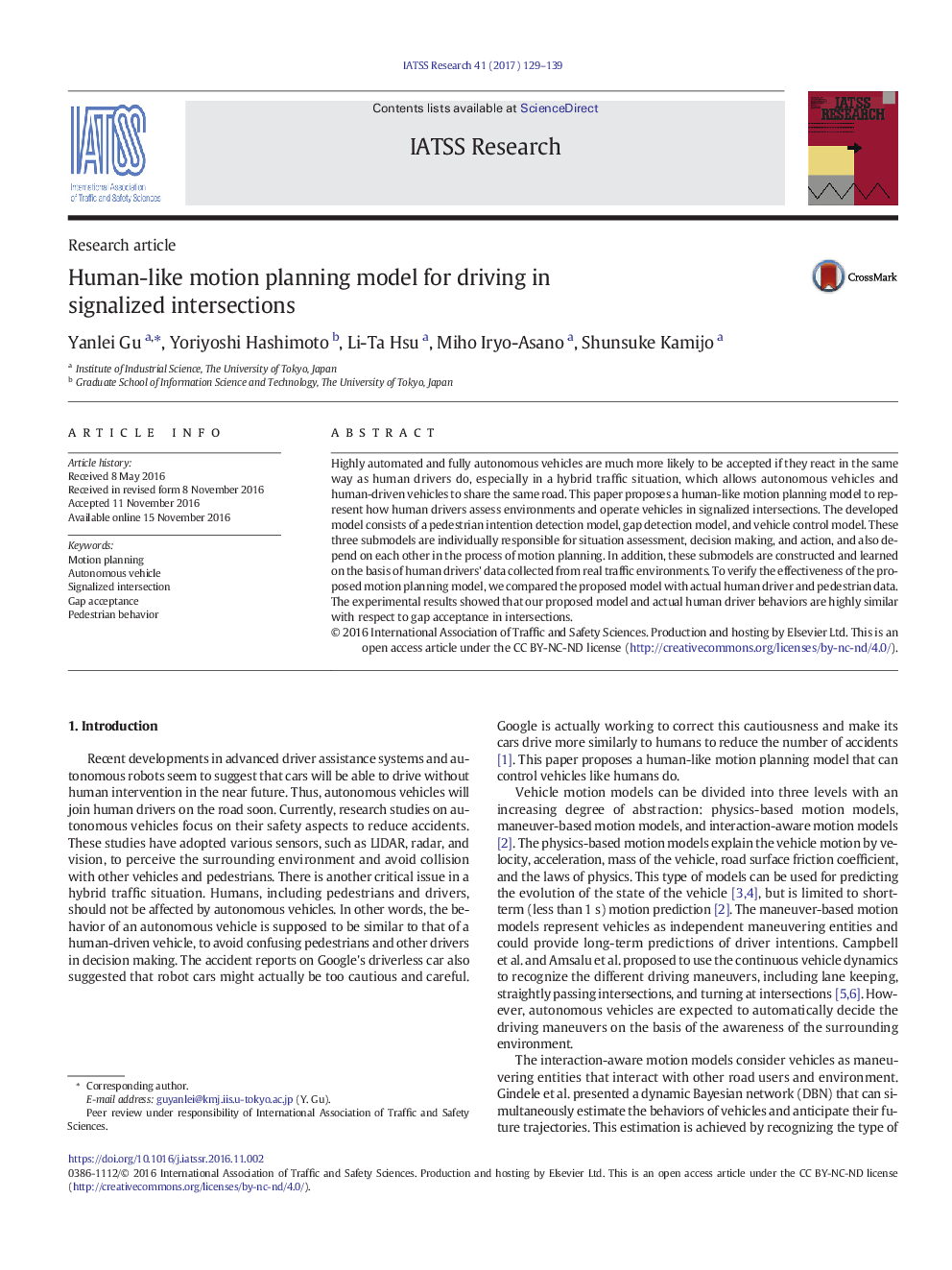| Article ID | Journal | Published Year | Pages | File Type |
|---|---|---|---|---|
| 5124686 | IATSS Research | 2017 | 11 Pages |
â¢A motion planning model is proposed to represent how human-drivers assess environments and drive in signalized intersections.â¢The developed model consists of pedestrian intention detection model, gap detection model and vehicle control model.â¢The submodels are constructed and learned based on the data collected from real traffic environments.â¢The experimental results illustrate that our proposed model and actual human driver behaviors are highly similar.
Highly automated and fully autonomous vehicles are much more likely to be accepted if they react in the same way as human drivers do, especially in a hybrid traffic situation, which allows autonomous vehicles and human-driven vehicles to share the same road. This paper proposes a human-like motion planning model to represent how human drivers assess environments and operate vehicles in signalized intersections. The developed model consists of a pedestrian intention detection model, gap detection model, and vehicle control model. These three submodels are individually responsible for situation assessment, decision making, and action, and also depend on each other in the process of motion planning. In addition, these submodels are constructed and learned on the basis of human drivers' data collected from real traffic environments. To verify the effectiveness of the proposed motion planning model, we compared the proposed model with actual human driver and pedestrian data. The experimental results showed that our proposed model and actual human driver behaviors are highly similar with respect to gap acceptance in intersections.
